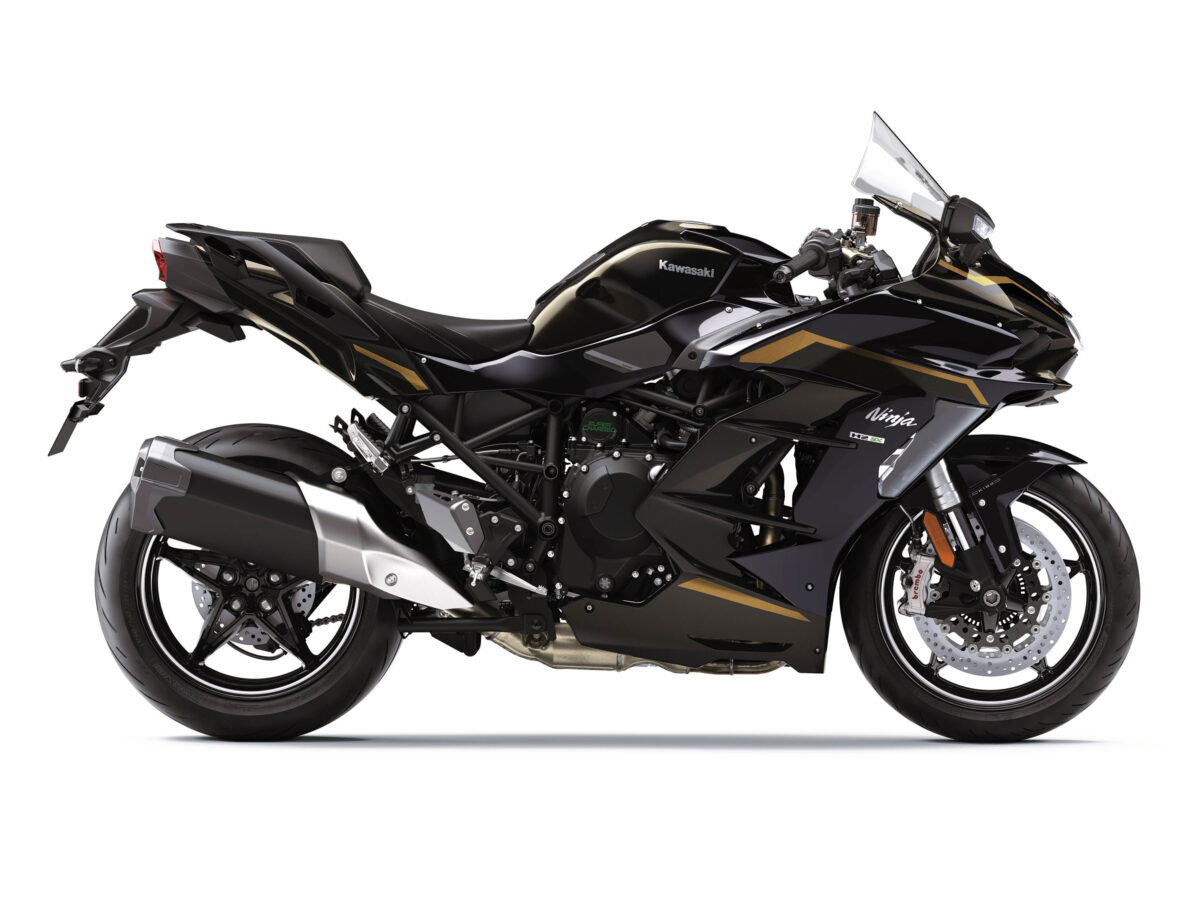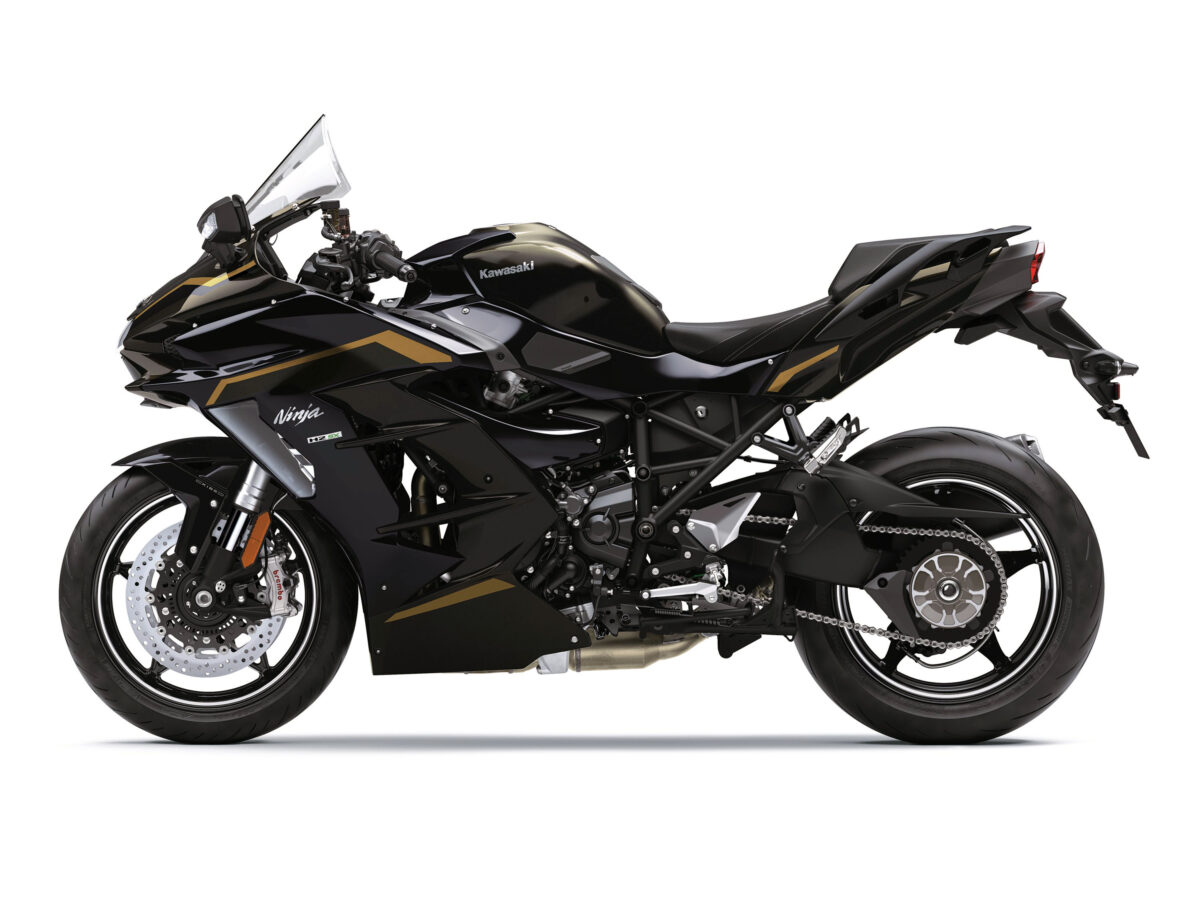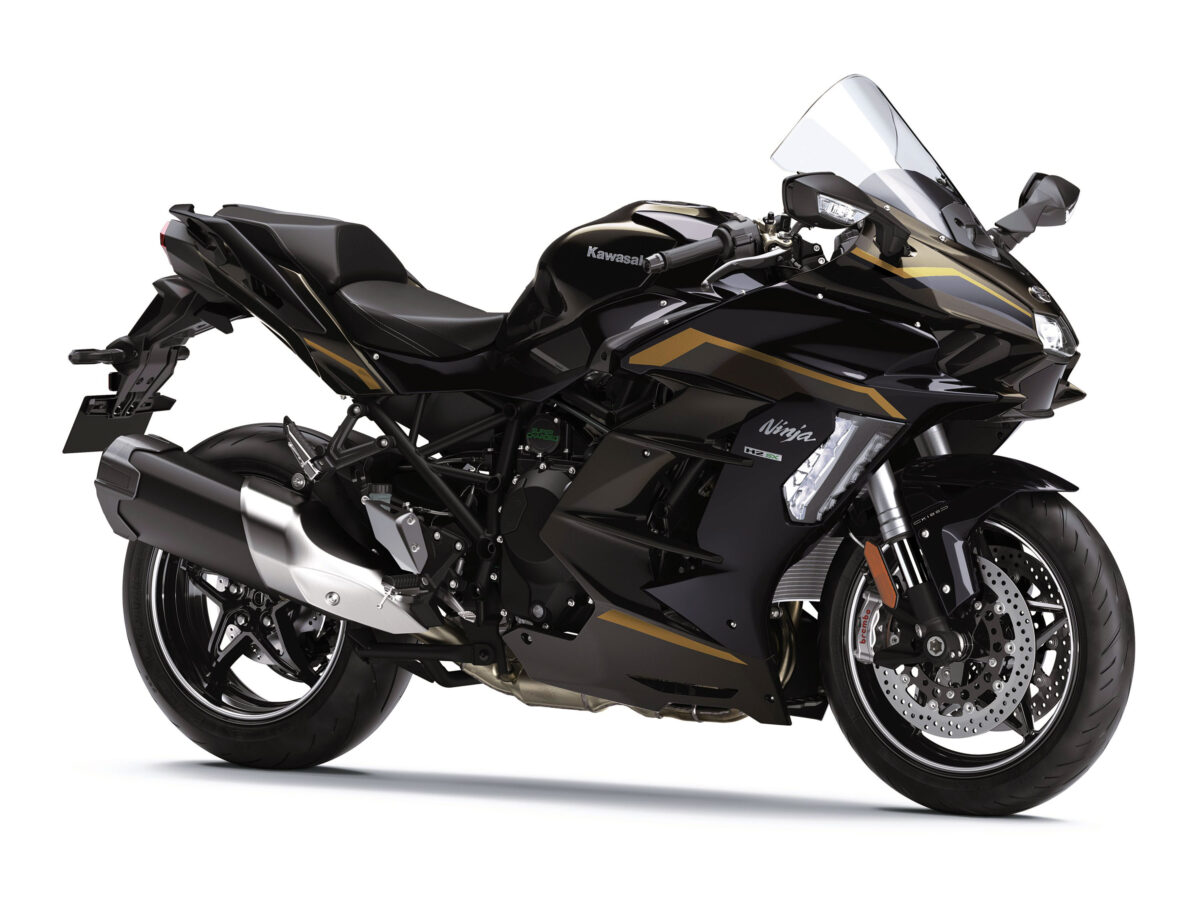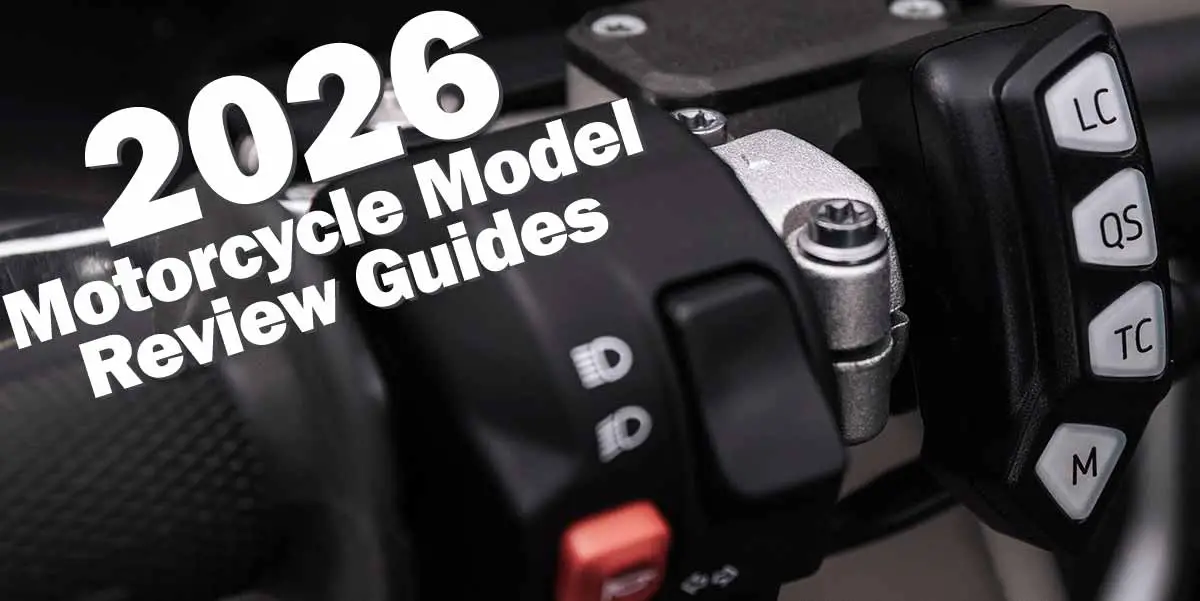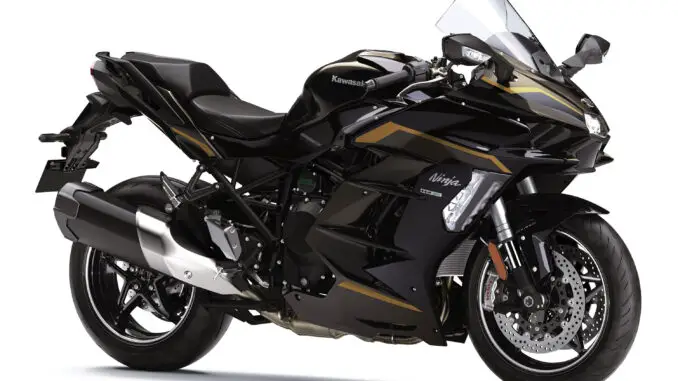
Power Modes: Models equipped with multiple Power Modes offer riders an easily selectable choice of engine power delivery to suit riding conditions or preference. In addition to Full Power mode, one (Low) or two (Middle, Low) alternate mode(s) in which maximum power is limited and throttle response is milder are provided.
Review – Key Features – Features & Benefits – Specifications
2026 Kawasaki Ninja H2 SX SE ABS: ENGINEERED TO BE FREE.
Introducing the 2026 Kawasaki Ninja H2 SX SE ABS…
The Kawasaki Ninja H2 SX SE ABS brings the latest in electronically controlled suspension, braking, and rider aid technologies to the supercharged hyperbike platform, making it the ultimate sport touring package. It’s powered by an exhilarating, balanced supercharged 998cc inline four-cylinder engine that is paired with impressive features such as a 6.5” TFT color instrumentation, Advanced Rider Assist System (ARAS), Adaptive Cruise Control (ACC), Forward Collision Warning (FCW), Blind Spot Detection (BSD), Tire Pressure Monitoring System (TPMS), Vehicle Hold Assist (VHA), Kawasaki Electronically Controlled Suspension (KECS), Brembo front brakes, Kawasaki Intelligent Proximity Activation Start System (KIPASS), and Auto Hi-Beam (AHS). This highly refined package offers an unrivaled level of performance and comfort, with agile handling akin to its superbike counterparts. For 2026, the Ninja H2 SX SE ABS is available in Metallic Brilliant Golden Black/Metallic Diablo Black .
2026 Kawasaki Ninja H2 SX SE ABS Totalmotorcycle.com Key Features
KAWASAKI ANNOUNCES FALL RELEASE OF 2026 STREET MOTORCYCLES
No matter what type of motorcycle you’re looking for, Kawasaki’s 2026 lineup has the model for you as it welcomes the return of several naked, retro, touring, adventure, cruiser, and EV models to its street motorcycle lineup. These 2026 model-year motorcycles are set to arrive in Kawasaki dealerships during the fall months so that riders can continue to “Let the Good Times Roll.”
2026 Kawasaki Ninja H2 SX SE ABS Totalmotorcycle.com Features and Benefits
TECHNOLOGY
ENGINE MANAGEMENT TECHNOLOGY
Assist & Slipper Clutch
Based on feedback from racing activities, the Assist & Slipper Clutch uses two types of cams (an assist cam and a slipper cam) to either drive the clutch hub and operating plate together or apart.
Under normal operation, the assist cam functions as a self-servo mechanism, pulling the clutch hub and operating plate together to compress the clutch plates. This allows the total clutch spring load to be reduced, resulting in a lighter clutch lever feel when operating the clutch.
When excessive engine braking occurs – as a result of quick downshifts (or an accidental downshift) – the slipper cam comes into play, forcing the clutch hub and operating plate apart. This relieves pressure on the clutch plates to reduce back-torque and helps prevent the rear tire from hopping and skidding. This race-style function is particularly useful when sport or track riding.
Economical Riding Indicator
Using high-precision electronic control for engine management, Kawasaki models can achieve a high level of fuel efficiency. However, fuel consumption is greatly affected by throttle use, gear selection, and other elements under the rider’s control. The Economical Riding Indicator is a function that indicates when current riding conditions are consuming a low amount of fuel. The system continuously monitors fuel consumption, regardless of vehicle speed, engine speed, throttle position and other riding conditions. When fuel consumption is low for a given speed (i.e. fuel efficiency is high), an “ECO” mark appears on the instrument panel’s LCD screen. By riding so that the “ECO” mark remains on, fuel consumption can be reduced.
While effective vehicle speed and engine speed may vary by model, paying attention to conditions that cause the “ECO” mark to appear can help riders improve their fuel efficiency – a handy way to increase cruising range. Further, keeping fuel consumption low also helps minimize negative impact on the environment.
Electronic Cruise Control
Electronic Cruise Control allows a desired speed (engine rpm) to be maintained with the simple press of a button. Once activated, the rider does not have to constantly apply the throttle. This reduces stress on the right hand when traveling long distances, enabling relaxed cruising and contributing to a high level of riding comfort.
Electronic Throttle Valves
Kawasaki’s fully electronic throttle actuation system enables the ECU to control the volume of both the fuel (via fuel injectors) and the air (via throttle valves) delivered to the engine. Ideal fuel injection and throttle valve position results in smooth, natural engine response and the ideal engine output. The system also makes a significant contribution to reduced emissions.
Electronic throttle valves also enable more precise control of electronic engine management systems like S-KTRC and KTRC, and allow the implementation of electronic systems like KLCM, Kawasaki Engine Brake Control, and Electronic Cruise Control.
Kawasaki Engine Brake Control
The Kawasaki Engine Brake Control system allows riders to select the amount of engine braking they prefer. When the system is activated, the engine braking effect is reduced, providing less interference when riding on the track.
KLCM (Kawasaki Launch Control Mode)
Designed to assist riders by optimizing acceleration from a stop, KLCM electronically manages engine output to minimize wheel spin when moving off. With the clutch lever pulled in and the system activated, engine speed is limited to a determined speed while the rider holds the throttle open. Once the rider releases the clutch lever to engage the clutch, engine speed is allowed to increase, but power is regulated to minimize wheel spin and help keep the front wheel on the ground. The system disengages automatically once a predetermined speed has been reached, or when the rider shifts into third gear. Depending on the model, riders can choose from multiple modes, each offering a progressively greater level of intrusion.
KCMF (Kawasaki Cornering Management Function)
Using the latest evolution of Kawasaki’s advanced modeling software and feedback from a compact IMU (Inertial Measurement Unit) that gives an even clearer real-time picture of chassis orientation, KCMF monitors engine and chassis parameters throughout the corner – from entry, through the apex, to corner exit – modulating brake force and engine power to facilitate smooth transition from acceleration to braking and back again, and to assist riders in tracing their intended line through the corner. The systems that KCMF oversees vary by model, but may include:
– S-KTRC/KTRC (including traction management and wheel lift management)
– KLCM (including traction management and wheel lift management)
– Designed to optimize acceleration from a stop
– KIBS (including pitching management and corner braking management)
– Kawasaki Engine Brake Control
KTRC (Kawasaki Traction Control)
KTRC, Kawasaki’s advanced traction control system provides both enhanced sport riding performance and the peace of mind to negotiate slippery surfaces with confidence. Multiple rider-selectable modes (the number of modes varies by model) offer progressively greater levels of intrusion to suit the riding situation and rider preference.
Less intrusive modes maintain optimum traction during cornering. Designed with sport riding in mind, they facilitate acceleration out of corners by maximizing forward drive from the rear wheel. And because Kawasaki’s sophisticated software bases its dynamic analysis on the chassis’ orientation relative to the track surface (rather than relative to a horizontal plane), it is able to take into account corner camber, gradient, etc., and adapt accordingly.
In the more intrusive modes (and for some models, in any mode), when excessive wheel spin is detected, engine output is reduced to allow grip to be regained, effectively enabling riders to negotiate both short, slippery patches (train tracks or manhole covers) and extended stretches of bad roads (wet pavement, cobblestone, gravel) with confidence.
Models equipped with IMU incorporate chassis-orientation feedback to offer even more precise management.
KQS (Kawasaki Quick Shifter)
Designed to help riders maximize their acceleration on the track by enabling clutchless upshifts with the throttle wide open, KQS detects that the shift lever has been actuated and sends a signal to the ECU to cut ignition so that the next gear can be engaged without having to use the clutch. On models that offer clutchless downshifts, during deceleration the system automatically controls engine speed so that the next lower gear can be selected without operating the clutch.
Power Modes
Models equipped with multiple Power Modes offer riders an easily selectable choice of engine power delivery to suit riding conditions or preference. In addition to Full Power mode, one (Low) or two (Middle, Low) alternate mode(s) in which maximum power is limited and throttle response is milder are provided.
Smartphone Connectivity
Clever technology enables riders to connect to their motorcycle wirelessly. Using the smartphone application “RIDEOLOGY THE APP,” a number of instrument functions can be accessed, contributing to an enhanced motorcycling experience. Vehicle information (such as the odometer, fuel gauge, maintenance schedule, etc) can be viewed on the smartphone. Riding logs (varies by model, but may include GPS route, gear position, rpm, and other information) can be viewed on the smartphone. When connected, telephone (call, mail) notices are displayed on the instrument panel. Riders can also make changes to their motorcycle’s instrument display settings (preferred units, clock and date setting, etc) via the smartphone. And on certain models, it is even possible to check and adjust vehicle settings (such as Rider Mode, electronic rider support features, and payload settings) using the smartphone.
Supercharged Engine
Drawing on the know-how and technology possessed by the Kawasaki Heavy Industries, Ltd. (KHI), Kawasaki’s supercharged engine delivers high engine output while maintaining a compact design. The key to achieving this incredible performance lies in the engine’s supercharger – a motorcycle-specific unit designed completely in-house with technology from the Kawasaki Gas Turbine & Machinery Company, Aerospace Company and Corporate Technology Division.
One of the greatest benefits of designing the supercharger in-house and tailoring its design to match the engine’s characteristics was that engineers were able to achieve high-efficiency operation over a wide range of conditions – something that would not have been possible by simply dropping in or trying to adapt an aftermarket automotive supercharger.
The importance of high efficiency is that it enables the engine to deliver high performance without a large amount of heat being generated during the compression process. Because intake air remains relatively cool, a large intercooler is not required and the supercharged engine could be made extremely compact.
CHASSIS MANAGEMENT TECHNOLOGY
ABS (Anti-lock Brake System)
Kawasaki ABS systems use front and rear wheel sensors to constantly monitor wheel speed. Should information from either of the sensors indicate that wheel lock has occurred, the ABS ECU directs the pump in the ABS unit to modulate brake fluid pressure (releasing and reapplying pressure so that traction can be regained) until normal operation resumes. ABS offers rider reassurance that contributes to greater riding enjoyment.
Cornering Lights
A set of three LED lights built into each side of the fairing (on certain models) are illuminated based on lean angle. They help illuminate the road when cornering at night. Each of the three lights has a fixed direction, and the lights come on based on the lean angle.
IMU-Enhanced Chassis Orientation Awareness
Combined with Kawasaki’s proprietary dynamic modeling program, input from the IMU (Inertial Measurement Unit) enables even more precise chassis orientation awareness, the key to bringing Kawasaki’s electronics to the next level.
KIBS (Kawasaki Intelligent anti-lock Brake System)
Kawasaki developed KIBS to take into account the particular handling characteristics of supersport motorcycles, ensuring highly efficient braking with minimal intrusion during sport riding. It is the first mass-production brake system to link the ABS ECU (Electronic Control Unit) and engine ECU.
In addition to front and rear wheel speed, KIBS monitors front brake caliper hydraulic pressure, throttle position, engine speed, clutch actuation and gear position. This diverse information is analyzed to determine the ideal front brake hydraulic pressure. Through precise control, hydraulic pressure is modulated in much smaller increments than with standard ABS systems. The system limits rear wheel lift under heavy braking and takes downshifting into account while braking, allowing the rider to manage the rear brake. And because of the finer control, kickback to the brake lever is minimal, resulting in a very natural feeling.
KECS (Kawasaki Electronic Control Suspension)
KECS adapts to road and riding conditions in real time, providing the ideal amount of damping required. Combining high-level mechanical components with the latest electronic control technology, KECS offers both the suppleness to handle a wide range of street riding situations, as well as the firm damping to facilitate more sporty riding. The addition of electronic adjustment of preload (on some models) and Showa’s Skyhook technology (on some models) offer a more complete package.
2026 Kawasaki Ninja H2 SX SE ABS – Totalmotorcycle.com USA Specifications/Technical Details
US MSRP Price: $ 29,999 USD
Canada MSRP Price: $34,999 CDN
Europe/UK MSRP Price: £ NA (On The Road inc 20% Vat)
POWER
| POWER | |
| Engine | 4-stroke, in-line 4-cylinder, DOHC, 16-valve, liquid-cooled |
| Displacement | 998cc |
| Bore x Stroke | 76.0 x 55.0mm |
| Compression Ratio | 11.2:1 |
| Maximum Horsepower | 207.0 hp¹ @ 10,000 rpm |
| Maximum Torque | 101.0 lb-ft @ 8,500 rpm |
| Fuel System | DFI with 40mm throttle bodies (4); Kawasaki Supercharger |
| Ignition | TCBI with Digital Advance |
| Transmission | 6-speed, return shift, dog-ring |
| Final Drive | Sealed chain |
| Electronic Rider Aids | Economical Riding Indicator, Advanced Rider Assistance Systems (ARAS): Forward Collision Warning (FCW), Blind-Spot Detection (BSD), Adaptive Cruise Control (ACC). Vehicle Hold Assist (VHA), Kawasaki Electronic Control Suspension with Showa Skyhook Technology (KECS), Power Modes, Kawasaki Cornering Management Function (KCMF), Kawasaki TRaction Control (KTRC), Kawasaki Launch Control Mode (KLCM), Kawasaki Intelligent anti-lock Brake System (KIBS), Anti-lock Brake System (ABS), Kawasaki Engine Brake Control (KEBC), Kawasaki Quick Shifter (KQS) (dual direction), IMU-Enhanced Chassis Orientation Awareness |
PERFORMANCE
| PERFORMANCE | |
| Front Suspension / Wheel Travel | 43mm inverted Showa fork with KECS-controlled rebound and compression damping, manual spring preload adjustability and top-out springs/4.7 in |
| Rear Suspension / Wheel Travel | Uni-Trak, Showa BFRC lite gas-charged shock with piggyback reservoir, KECS-controlled compression and rebound damping electronically-adjustable spring preload/5.5 inspring/5.3 in |
| Front Tire | 120/70-17 |
| Rear Tire | 190/55-17 |
| Front Brakes | Dual 320mm semi-floating discs with dual radial-mount, opposed 4-piston Brembo Stylema calipers, Kawasaki Intelligent anti-lock Brake System (KIBS) |
| Rear Brakes | Single 250mm disc with opposed 2-piston caliper, Kawasaki Intelligent anti-lock Brake System (KIBS) |
DETAILS
| DETAILS | |
| Frame Type | Trellis, high-tensile steel, with swingarm mounting plate |
| Rake/Trail | 24.7°/4.1 in |
| Overall Length | 85.6 in |
| Overall Width | 31.1 in |
| Overall Height | 49.6 in |
| Ground Clearance | 5.1 in |
| Seat Height | 32.9 in |
| Estimated Dry Weight | 546.8 lb** |
| Curb Weight | 590.9 lb* |
| Fuel Capacity | 5.0 gal |
| Wheelbase | 58.3 in |
| Special Features | Supercharged engine, 6.5″ Full-color TFT Instrumentation, All-LED lighting including Cornering Lights, Kawasaki’s Intelligent Proximity Activation Start System (KIPASS), Highly Durable Paint, Grip heaters, Tire Pressure Monitoring System (TPMS), Smartphone Connectivity via Kawasaki SPIN infotainment app |
| Color Choices | Metallic Brilliant Golden Black/Metallic Diablo Black |
*Curb weight includes all necessary materials and fluids to operate correctly, full tank of fuel (more than 90 percent capacity) and tool kit (if supplied).
**Dry weight does not include all necessary materials and fluids to operate correctly, full tank of fuel (more than 90 percent capacity) and tool kit (if supplied).
¹This vehicle’s HP was measured according to ISO standard 4106. This ISO standard measures HP differently than the SAE standards by which the horsepower of many cars is measured, and as a result the referenced HP measurement may be higher than if it were measured by an SAE standard.
KAWASAKI CARES: Read Owner’s Manual and all on-product warnings. Always wear a helmet, eye protection and proper apparel. Never ride under the influence of drugs or alcohol. Adhere to the maintenance schedule in your Owner’s Manual. ©2025 Kawasaki Motors Corp., U.S.A.
Specifications subject to change.
2026 Kawasaki Ninja H2 SX SE ABS – Totalmotorcycle.com Canadian Specifications/Technical Details
POWER
| Power | 147 kW {200 PS} / 10,000 rpm |
| Power with Ram Air | 154 kW {210 PS} / 10,000 rpm |
| Torque | 137 Nm {14.0 kgfm} / 8,500 rpm |
| Engine | 998cc, liquid-cooled, 4-stroke, DOHC 16-valve in-line four |
| Bore x Stroke | 76.0 x 55.0 mm |
| Compression Ratio | 11.2:1 |
| Fuel System | Fuel injection: ø40 mm x 4 with dual injection |
| Intake System | Kawasaki Supercharger |
| Ignition | Digital |
| Starting | Electric |
| Lubrication | Forced lubrication, wet sump with oil cooler |
| Transmission | 6-speed, return, dog-ring |
| Clutch | Wet multi-disc, manual |
| Final Drive | Chain |
PERFORMANCE
| Frame | Trellis, high-tensile steel, with Swingarm Mounting Plate |
| Front Suspension / Wheel Travel | ø43 mm inverted fork with KECS-controlled compression and rebound damping, manual spring preload adjustability, and top-out springs / 120 mm (4.7 in) |
| Rear Suspension / Wheel Travel | New Uni Trak, BFRC lite gas-charged shock with piggyback reservoir, KECS-controlled compression and rebound damping, and electronically adjustable spring preload / 139 mm (5.5 in) |
| Rake / Trail | 24.7° / 103 mm |
| Steering Angle (L/R) | 30° / 30° |
| Front Tire | 120/70ZR17M/C (58W) |
| Rear Tire | 190/55ZR17M/C (75W) |
| Front Brakes | Dual semi-floating ø320 mm discs with radial-mount, Brembo Stylema monobloc, opposed 4-piston calipers |
| Rear Brake | ø250 mm disc with 2-piston caliper |
DETAILS
| Dimensions (L x W x H) | 2,175 x 790 x 1,260 mm (85.6 x 31.1 x 49.6 in) |
| Wheelbase | 1,480 mm (58.3 in) |
| Road Clearance | 130 mm (5.1 in) |
| Seat Height | 835 mm (32.9 in) |
| Curb Weight* | 268 kg (591 lb) |
| Estimated Dry Weight** | 248 kg (547 Ib) |
| Fuel Capacity | 19 litres |
| Instrumentation | Full-colour TFT screen with integrated riding mode, gear position indicator, distance setting indicator, ACC indicator, tachometer, KQS indicator, Kawasaki Engine Brake Control indicator, multifunction gauge (boost pressure + throttle application, front brake pressure or G-force), digital speedometer, cornering light indicator, service indicator, VHA indicator, and Economical Riding Indicator, odometer, dual trip meters, bank angle display and max bank angle recording function, tire pressure, boost pressure, boost (intake air chamber) temperature, current and average fuel consumption, remaining range, average speed, total time, battery voltage, fuel gauge, KECS preload mode (on the SE model), outside temperature, ice warning, connected device indicator, clock and coolant temperature |
| Warranty | 12 months |
| Kawasaki Protection Plus | 12 / 24 / 36 / 48 months |
*Curb weight includes all necessary materials and fluids to operate correctly, full tank of fuel (more than 90 percent capacity) and tool kit (if supplied).
**Estimated dry weight does not include all necessary materials and fluids to operate correctly, full tank of fuel (more than 90 percent capacity) and tool kit (if supplied).
KAWASAKI CARES: Always wear a helmet, eye protection, and proper apparel. Never ride under the influence of drugs or alcohol. Read Owner’s Manual and all on-product warnings. Professional rider shown on a closed course. 2020 Canadian Kawasaki Motors, Inc.
Specifications subject to change.
2026 Kawasaki Ninja H2 SX SE ABS – Totalmotorcycle.com European Specifications/Technical Details
NA
Manufacturer Specifications and appearance are subject to change without prior notice on Total Motorcycle (TMW).


